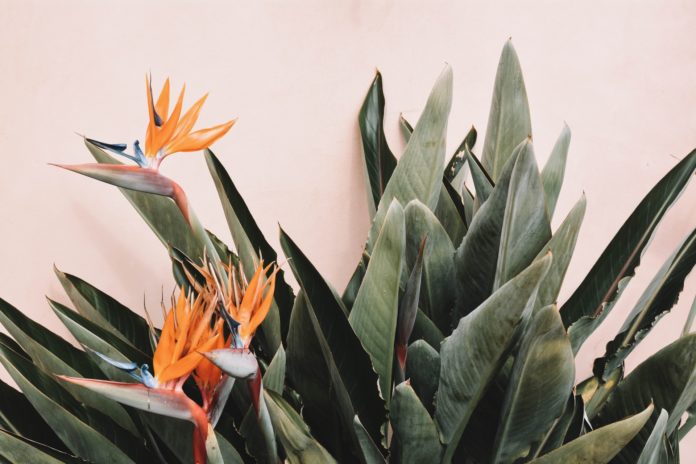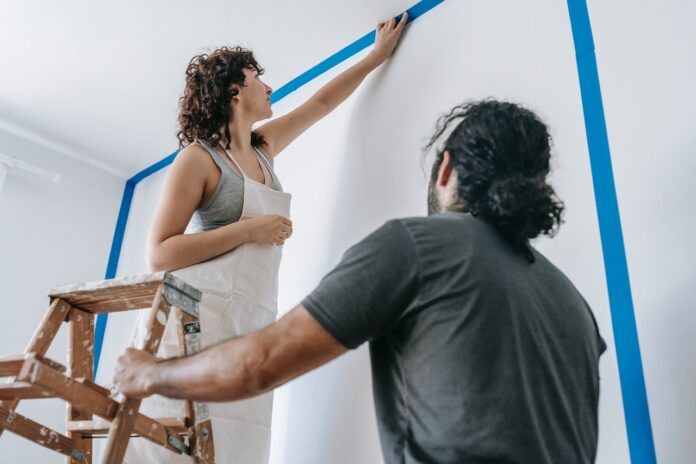Ideal if you’re looking for top tips on how to make paella
Though there are countless regional variations, global mispronunciations and quarrels over a whole host of celebrity chefs’ erant additions, the origins of paella are somewhat less debated or contentious.
Indeed, it’s generally accepted that the dish emerged in the rice growing areas of Spain’s Mediterranean coast and the Valencian countryside, with the Moors in Muslim Spain introducing rice to the country over a 1000 years ago through ports like Valencia’s. This also explains the presence of the essential saffron in the dish.
Just half an hour south of Valencia, in the small hamlets on the freshwater lagoon Albufera, is where it’s believed paella originated. With the lake’s fertile marshlands ideal for rice plantations and an abundance of wild game attracted to Albufera’s topography, the ingredients for paella were close to hand; the dish a natural product of what was available and abundant.
Fast forward to 2023, and to name all of the modern day variations of the dish would take you down something of a rabbit hole; somewhat appropriate considering rabbit was the original protein used in Paella Valenciana.
Nowadays, seafood versions are also common, with the town of Alicante and its surrounding fishing villages two hours south of Valencia specialising in Paella de Marisco, whilst black paella (Arroz Negra) coloured with cuttlefish fish ink is another popular rendition.
As with most regional specialities of humble, proud origins, paella is not a dish to be deconstructed or a recipe that should be ‘refined’ or modernised; its humble majesty doesn’t benefit from such cheffy flourishes. Instead, it’s a dish that shines most brightly in its simplicity.
Should you be wondering how to approach this fantastic dish, then here are 10 steps to a perfect, traditional paella.
TRADITIONAL PAELLA VALENCIANA INGREDIENTS
Let’s first deal with a sometimes contentious topic; the ingredients that define paella.
Valencians believe that once you start adding chorizo, potatoes or any other unwelcome guests, then the dish shouldn’t be called paella at all, but rather, ‘rice with stuff’, and that’s a useful point to remember.
Even more useful, and owing to a long and inglorious history of paella deviating so far from the norm that it becomes unrecognisable, an ingredients list for Paella Valenciana has been standardised.
The Council of Agriculture of the Government of Valencia have made efforts to protect paella recipes with a label of ‘’Denominación de Origen’’, a status similar to France’s AOC certification for specialist cheese, wines and butters, and Italy’s DOC standardised recipe for Neapolitan pizza. Accordingly, the essential ingredients that make up a traditional Paella Valenciana are:
- Extra virgin olive oil
- Rabbit
- Chicken (though not the breast)
- Garrofó and ferraúra beans (though runner and broad beans are viable equivalents more readily available in the UK)
- Tomato (usually grated, though puree is also acceptable)
- Water
- Saffron
- Salt
- And most importantly, round rice (for example, bomba) with D.O. Arroz de Valencia status
The Council of Agriculture have also declared that the following additional ingredients are fine to use in Paella Valenciana:
- Garlic
- Parsley and rosemary
- Artichokes, especially in winter
- Pimentón powder (paprika)
- Duck, particularly from Albufera
- Snails, which along with rabbit were the proteins for the original version
The ingredients for Alicante style Paella de Marisco are similar, although rabbit and chicken are subbed out for prawns (shell on, ideally), mussels (again, shell on…that’s where the flavour is) and cuttlefish or squid, cut into ringlets.
Perhaps even more importantly in Paella de Marisco – yep, we realise that sounds crazy when seafood is the defining feature – is the addition of a salmoretta base. This is similar to an Italian soffrito, and sees garlic, diced onion, tomatoes and paprika sweated down for quite some time until they reach a jam-like consistency. This is often done in large quantities ahead of time and then stored in the fridge, ready to be used when the craving for Paella de Marisco hits.
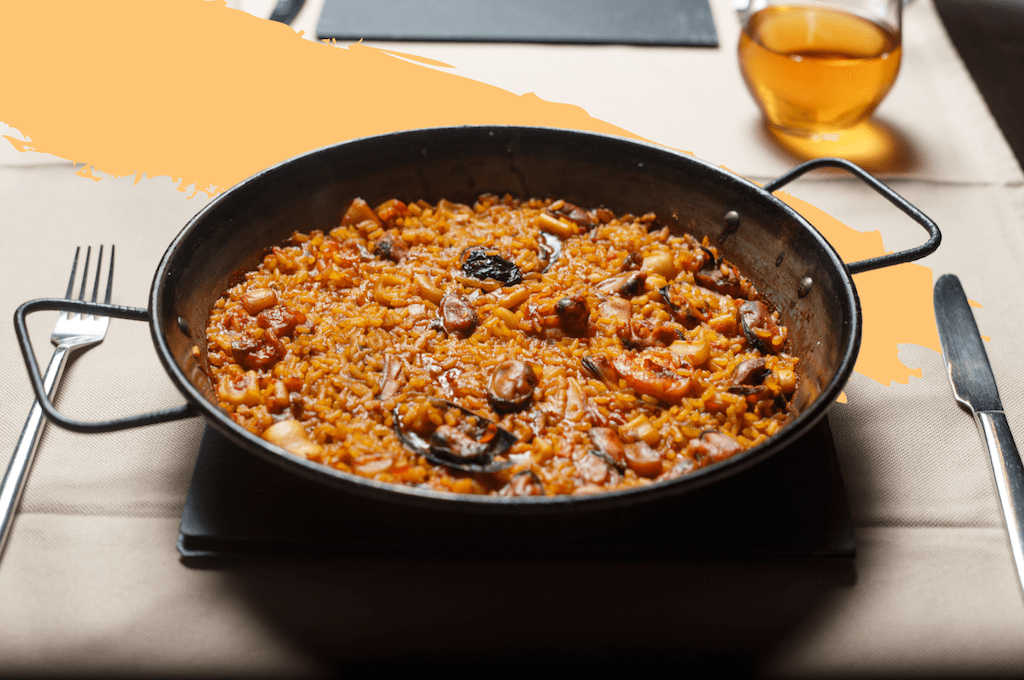
THE METHOD
We’re here to consider the elements that make a traditional paella and those little touches that elevate a dish from the good to the great.
Rather than listing instructions, you can check out a great recipe for seafood paella at mahatmarice.com, noting the use of stock rather than water present in Paella de Marisco, as well as their addition of monkfish, which whilst not necessarily 100% traditional, works very well.
The BBC’s instructional on Valencian Paella stays pretty true to form, too, with only garlic and lemon deviating from the standardised recipe.
But whilst everyone can read a recipe, not everyone can pull off a perfect paella. So, what are the secrets to a perfect, traditional paella?
GRAINS OF TRUTH
Sometimes labelled as Rice de Valencia, Bomba rice is considered the ideal grain to use for paella. That said, many aficionados believe that rice grown in Spain’s Calasparra region is even better. Either way, you certainly don’t want to use any rice that isn’t round, and medium-to-short or short grain.
Bomba, in particular, is so perfect for paella because it’s able to absorb three times its volume in water (the average grain of rice can only absorb two), meaning it can take on all the flavour of the stock and other paella ingredients without turning to a clumpy, homogenous mush.
At a push, if you can’t find Bomba or Calasparra in the UK, you can substitute them for Arborio rice, which is used for risotto, though this would likely no longer be considered a traditional paella. If you are going to risk risotto rice, it’s essential that you wash it thoroughly first to remove the starch, as a creamy texture isn’t what paella is prized for.
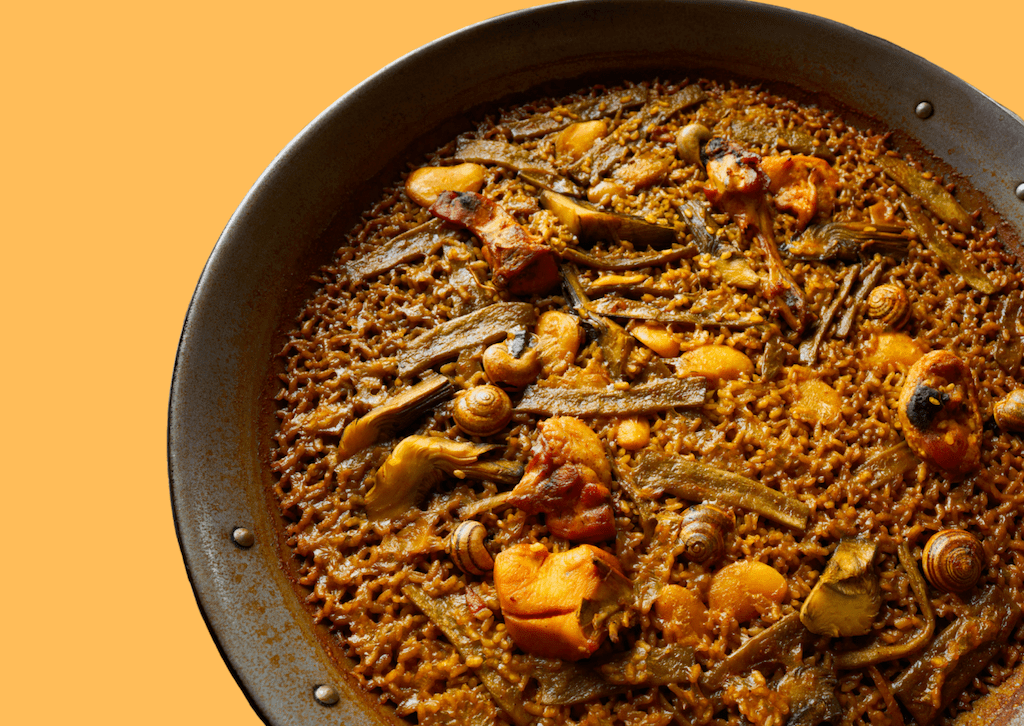
THE PAN
The name ‘paella’ actually comes from the Valencian for ‘pan’, highlighting both the origins of the dish and the importance of the vessel it’s cooked in.
Traditional paella pans are made from carbon steel, which conducts heat well, and are circular, shallow and wide. This shape allows the cook to control how much water evaporates, leading to the highly prized ‘socarrat’, that crust of crisp rice left on the base of the pan that is, to many, the very best bit. More of that later, by the way…
A paella pan should also have two handles. Paella is a celebratory dish, often cooked at festivals, family events, and other large gatherings. As such, the two handles are needed to bring the pan to the table ceremoniously, making it a glorious centrepiece in the process. In fact, true Valencian tradition dictates that paella should be eaten straight from the pan, using only a wooden spoon.
SMOKE SIGNALS
Traditionally, paella was cooked over an open wood fire, imparting the dish with a delicate smokey flavour and covering the entire surface area of the expansive pan’s underside evenly. Put bluntly, this method can’t be beaten. That said, for many, it’s simply not practical, but it’s important you try to replicate that heat initially coming from the bottom upwards, so you can achieve that socarrat we mentioned earlier.
In a modern kitchen, you can begin your paella on the stovetop, moving it into the oven for the final ten minutes of cooking. Make sure you check if your paella pan’s handles are heatproof and not made of plastic beforehand!
If you’re up for the traditional experience and taste, you should endeavour to make your paella on an open fire or barbeque. Though the dish needs constant attention when cooked over flames, the results are incomparable, with the umami flavour imparted by the smoke the essence of a great paella.
TO STOCK OR NOT TO STOCK?
As a general rule, you should be using a ratio of three to one, water to rice, for paella, owing to the nature of the Bomba grain’s ability to absorb liquid. Should you be using a different type of rice, you’ll have to be more scrupulous when cooking your paella, topping up the pan with new water as you see fit.
Generally, water is preferred to stock in a Paella Valenciana, as the flavours of the rabbit and chicken are easily overwhelmed. Some cooks may be tempted to use chicken stock, but this detracts from the rice’s delicate, nuanced profile. And this thing is all about the rice, after all.
When making Paella de Marisco, it’s more common to use shellfish stock, made by simmering prawn shells in traditional fish stock or water for around half an hour, skimming off any scum that rises to the surface and straining it once ready.
Read: 8 IDEAL things to do in Valencia
GOLD, NOT YELLOW
A wise man once said that you can tell if a paella has been made well by its colour. The bright yellows and vivid oranges of glossy magazine pages indicate a lack of attention (or, a rogue hand with the photoshop) has gone into the cooking of paella.
A great paella will be deep golden, not yellow, with the colour not only dependent on the presence of saffron, but also on the depth of flavour (and resultant colour) imparted by slow cooking of the tomatoes or salmoretta, as well as the licks of smoke from the open fire, and the rice catching – though not burning – on the bottom of the pan, forming that much desired crust.
That is what brings the depth of colour, not just saffron. And certainly not turmeric.
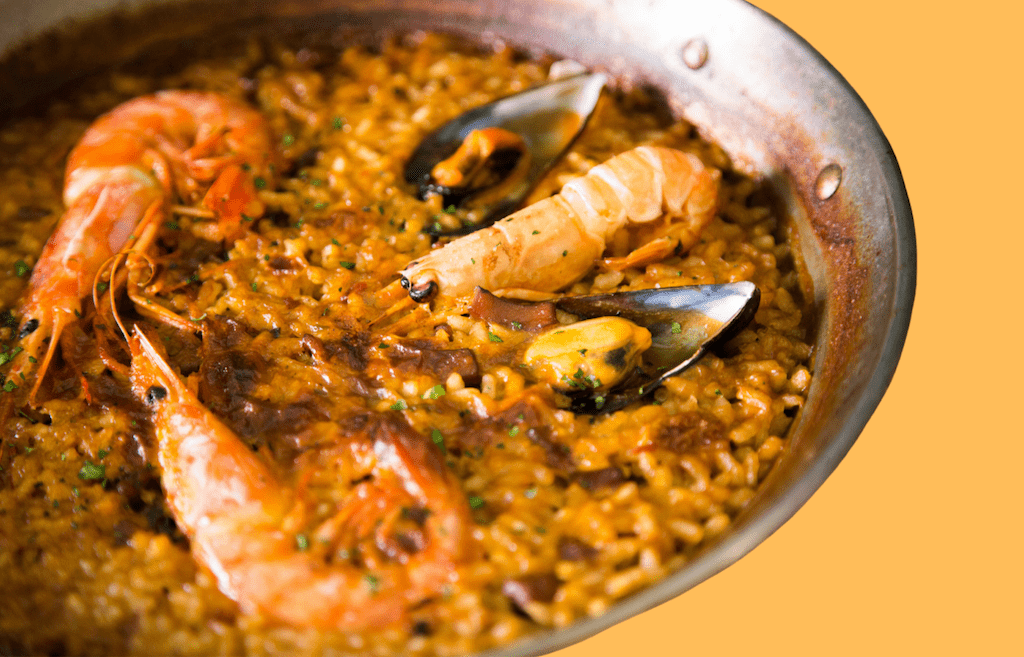
DON’T STIR
Jamie Oliver caused a stir (sorry) a few years back with his paella recipe, both for its addition of chorizo but also because he instructed readers to stir the paella. This is a big mistake, as stirring agitates the starch in the rice, causing the dish to become luscious and creamy. Whilst this is the aim of a risotto (hence the necessity for constant, vigorous stirring), it’s not a desirable texture in paella. Instead, you want your rice to be dry and very much separate when the dish is served.
Instead, the rice is cooked in liquid, first vigorously boiled, then simmered, then barely bubbling, over the course of around half an hour, with the chef constantly tinkering with heat in order to achieve the perfect amount of absorption just as the rice finishes cooking. Paella rice should neither see the direct heat of a dry pan or the back of a spoon or spatula during the cooking process.
IN SEARCH OF SOCARRAT
We’ve mentioned the all important socarrat so many times it’s developed an almost onomatopoeic quality, calling to ear the sound of a spoon scraping off the final, delicious caramelised crust of rice from the bottom of the paella pan.
This is achieved, firstly, by maximising the amount of rice that is touching the pan. This is done by using a proper paella pan and cooking the dish for a large party of people, as it was intended to be.
Next, an even spread of heat from below (best achieved on an open flame) will guarantee an equally even blanket of socarrat.
Finally, when your paella is done – the rice is cooked to al dente, the stock absorbed, and the protein and vegetables cooked just so – you should turn up the heat high (or find the hottest part of your barbeque or open fire) and wait until you hear a hiss and crackle, indicating that socarrat is in motion. Result!
You can use a spoon at this stage to test if a crust has truly formed, running it gently along the bottom of the pan to identify a rough resistance that’s different in texture to the rest of the paella.
VALENCIA ROOM TEMPERATURE
We’re still not done! Before you tuck in, you should let your paella rest a while, to allow for all the flavours to fully absorb and mellow. Five to ten minutes should do, or, more poetically, once the paella has reached Valencia room temperature – warm, balmy and beautiful – it’s ready. Bon profit!


